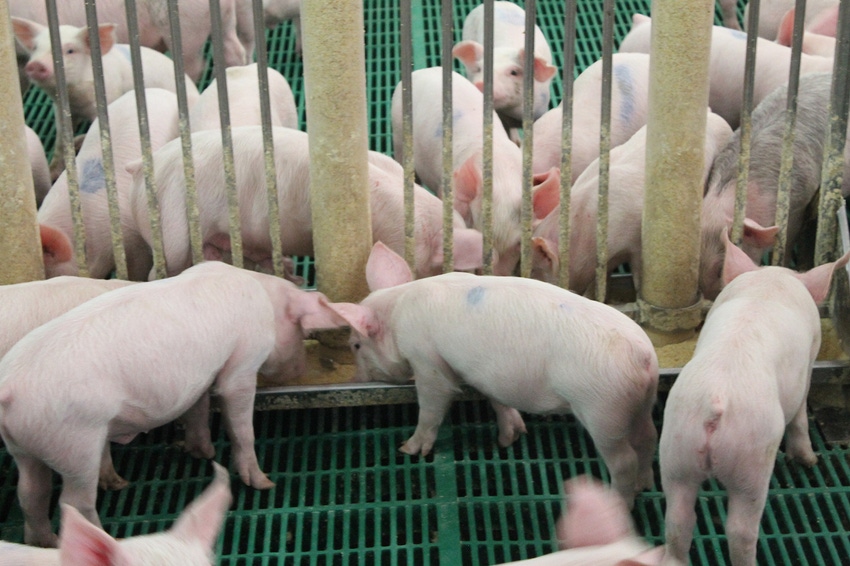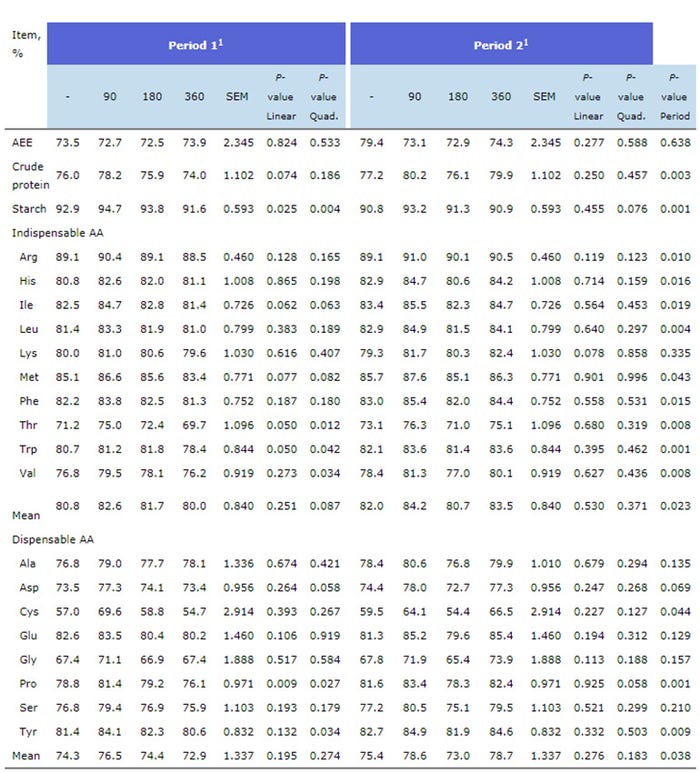Objective of the experiment was to test the hypothesis that the apparent ileal digestibility of crude protein, amino acids, acid hydrolyzed ether extract and starch in corn-soybean meal diets fed to pigs increases as IQ is added to the diet.
May 3, 2018

Source: University of Illinois Hans H. Stein Monogastric Nutrition Laboratory
Sangrovit G is a phytogenic feed additive derived from Macleaya cordata composed of isoquinoline alkaloids (IQ), primarily sanguinarine, that are believed to benefit animal performance. Sanguinarine has anti-inflammatory, immuno-modulatory and antimicrobial effects. As a result, inclusion of IQ in diets for pigs may reduce inflammation in the intestine and thereby increase absorption of essential nutrients.
However, there are no data published for the effects of IQ on digestibility of crude protein, amino acids, starch and lipids in pigs. Therefore, the objective of the experiment was to test the hypothesis that the apparent ileal digestibility (AID) of crude protein, amino acids, acid hydrolyzed ether extract and starch in corn-soybean meal diets fed to young growing pigs increases as IQ is added to the diet.
Key points
• The AID of starch quadratically increased as IQ was added to the diet with the highest values observed in the 90 milligrams per kilogram diet.
• Inclusion of IQ increased the AID of Thr, Trp, Val, Pro and Tyr, with the greatest response generally observed in the 90 milligrams per kilogram IQ diet.
• AID values for crude protein, all indispensable amino acids except Lys, Pro, and Tyr were higher in Period 2 than in Period 1.
• Results indicate that at least 90 milligrams per kilogram IQ in corn-soybean meal diets fed to young growing pigs is needed to maximize the AID of starch and amino acids.
Experimental design
Four diets were formulated for this experiment. A basal diet primarily consisting of corn, soybean meal, fish meal and lactose was formulated. Three additional diets were formulated by adding 90, 180, or 360 milligrams per kilogram of IQ to the basal diet at the expense of corn. Therefore, all diets were identical with the exception of the inclusion of IQ.
Thirty-two ileal cannulated young growing barrows with an initial body weight of 12.19 kilograms were fed one of the four dietary treatments for two periods. The first period consisted of 12 days for adaptation and two days of ileal digesta collection. Period 2 consisted of 11 days of continued adaptation and two days of ileal digesta collection. The ileal digesta were analyzed for crude protein, amino acids, acid hydrolyzed ether extract and starch to calculate the AID of each nutrient.

Table 1: Effects of isoquinoline alkaloids on apparent ileal digestibility of acid hydrolyzed ether extract, starch and amino acids in diets fed to weanling pigs1 The four diets contained 0, 90, 180 or 360 milligrams per kilogram IQ (Phytobiotics Futterzusatzstoffe GmbH, Eltville, GE)
Results
There was no effect of IQ supplementation on the AID of acid hydrolyzed ether extract (Table 1). In both periods, the AID of starch increased and then decreased (P < 0.05) as IQ was added to the diet with the greatest response observed with the addition of 90 milligrams per kilogram of IQ; however, the AID of starch was higher (P < 0.05) in Period 1 than in Period 2. In Period 1, there was a quadratic increase (P < 0.05) in the AID of Thr, Trp, Val, Pro and Tyr, with the greatest values generally observed in the diet containing 90 milligrams per kilogram of IQ. There was also a trend for the AID of Ile and Met to increase as IQ was added to the diets. A period effect was observed for the AID of crude protein, all indispensable amino acids except Lys, Pro and Tyr with values in period two being greater (P < 0.05) than in Period 1. In contrast, the AID of Cys was greater (P < 0.05) in Period 1 than in Period 2.
This report is based on unpublished research by Carly M. Rundle and Hans H. Stein.
You May Also Like


